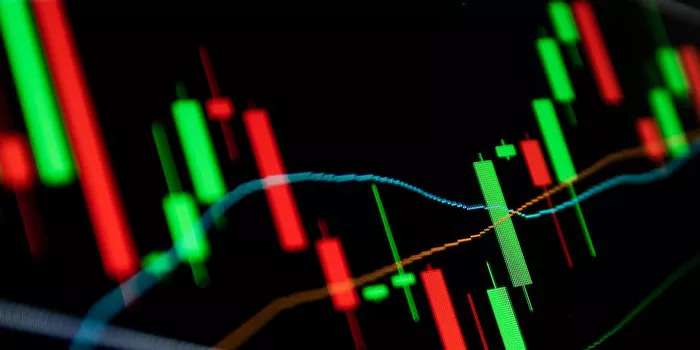Interest rate futures are financial contracts that derive their value from the future interest rates of underlying financial instruments, such as government bonds, corporate bonds, or treasury bills. These futures contracts allow market participants to speculate on or hedge against future changes in interest rates, providing a means to manage interest rate risk and capitalize on interest rate movements. In this article, we’ll delve into the workings of interest rate futures, exploring how they function, their key features, and how traders and investors can utilize them to achieve their financial objectives.
Understanding Interest Rate Futures
Interest rate futures are standardized contracts traded on futures exchanges, where buyers and sellers agree to exchange an underlying interest-bearing instrument at a predetermined price on a specified future date. The underlying instrument typically represents a debt security with a fixed or floating interest rate, such as a government bond or a corporate bond. Interest rate futures contracts specify the terms of the transaction, including the notional value, contract size, delivery date, and delivery specifications.
Mechanics of Interest Rate Futures Trading
Trading interest rate futures involves several key steps, including contract specification, order placement, margin requirements, and settlement. Here’s a brief overview of how interest rate futures trading works:
1. Contract Specification: Interest rate futures contracts specify the underlying instrument, contract size, delivery month, and delivery specifications. For example, a 10-year Treasury note futures contract may represent the delivery of a $100,000 face value of 10-year Treasury notes on a specified delivery date.
2. Order Placement: Traders can place orders to buy or sell interest rate futures contracts through their brokerage accounts or trading platforms. Orders can be market orders, limit orders, stop orders, or spread orders, depending on the trader’s trading strategy and objectives.
3. Margin Requirements: To trade interest rate futures contracts, traders are required to deposit an initial margin with their brokerage firm. Margin requirements are set by the exchange and vary depending on factors such as contract size, volatility, and market conditions. Traders must maintain sufficient margin levels in their accounts to cover their positions and avoid margin calls.
4. Settlement and Delivery: Interest rate futures contracts can be settled through cash settlement or physical delivery, depending on the contract specifications. Cash-settled contracts are settled financially based on the difference between the contract price and the settlement price at expiration. Physical delivery contracts require the buyer to take delivery of the underlying instrument and the seller to deliver the instrument at the specified location and time.
Factors Influencing Interest Rate Futures Prices
Several factors influence the prices of interest rate futures contracts, reflecting the dynamic nature of interest rate markets and the broader economic environment. Some of the key factors influencing interest rate futures prices include:
1. Changes in Interest Rates: The most significant factor driving interest rate futures prices is changes in interest rates themselves. Futures prices move inversely to interest rates, meaning that as interest rates rise, futures prices fall, and vice versa. Traders closely monitor central bank decisions, monetary policy announcements, economic data releases, and inflation expectations to anticipate changes in interest rates and position themselves accordingly in interest rate futures contracts.
2. Yield Curve Flattening or Steepening: Changes in the shape of the yield curve, such as flattening or steepening, can impact interest rate futures prices. A flattening yield curve, where short-term interest rates rise faster than long-term rates, may lead to lower futures prices for longer-dated contracts. Conversely, a steepening yield curve, where long-term rates rise faster than short-term rates, may lead to higher futures prices for longer-dated contracts. Traders analyze yield curve dynamics to identify potential trading opportunities and adjust their positions accordingly.
3. Economic Data Releases: Economic indicators such as gross domestic product (GDP) growth, inflation, employment, and consumer spending can influence interest rate expectations and futures prices. Stronger-than-expected economic data may lead to expectations of tighter monetary policy and higher interest rates, while weaker-than-expected data may lead to expectations of looser monetary policy and lower interest rates. Traders monitor economic data releases and their impact on interest rate expectations to anticipate potential price movements in interest rate futures contracts.
4. Market Sentiment and Risk Appetite: Market sentiment and risk appetite also play a role in shaping interest rate futures prices. Positive sentiment and risk appetite may lead to expectations of higher economic growth and inflation, driving expectations of higher interest rates and lower futures prices. Conversely, negative sentiment and risk aversion may lead to expectations of slower economic growth and lower inflation, driving expectations of lower interest rates and higher futures prices. Traders assess market sentiment indicators and risk appetite to gauge potential price movements in interest rate futures contracts.
Conclusion
Interest rate futures provide market participants with a powerful tool for managing interest rate risk, speculating on interest rate movements, and accessing opportunities in interest rate markets. By understanding the mechanics of interest rate futures trading, including contract specifications, order placement, margin requirements, and settlement procedures, traders and investors can effectively navigate interest rate futures markets and capitalize on opportunities to achieve their financial objectives. With proper research, analysis, and risk management, interest rate futures can be an essential component of a diversified investment portfolio and a valuable instrument for hedging against interest rate volatility in the dynamic global financial markets.


